Gundog trainer Howard Kirby explains the skills and exercises we need in order to keep our dogs working in that all important hunting area
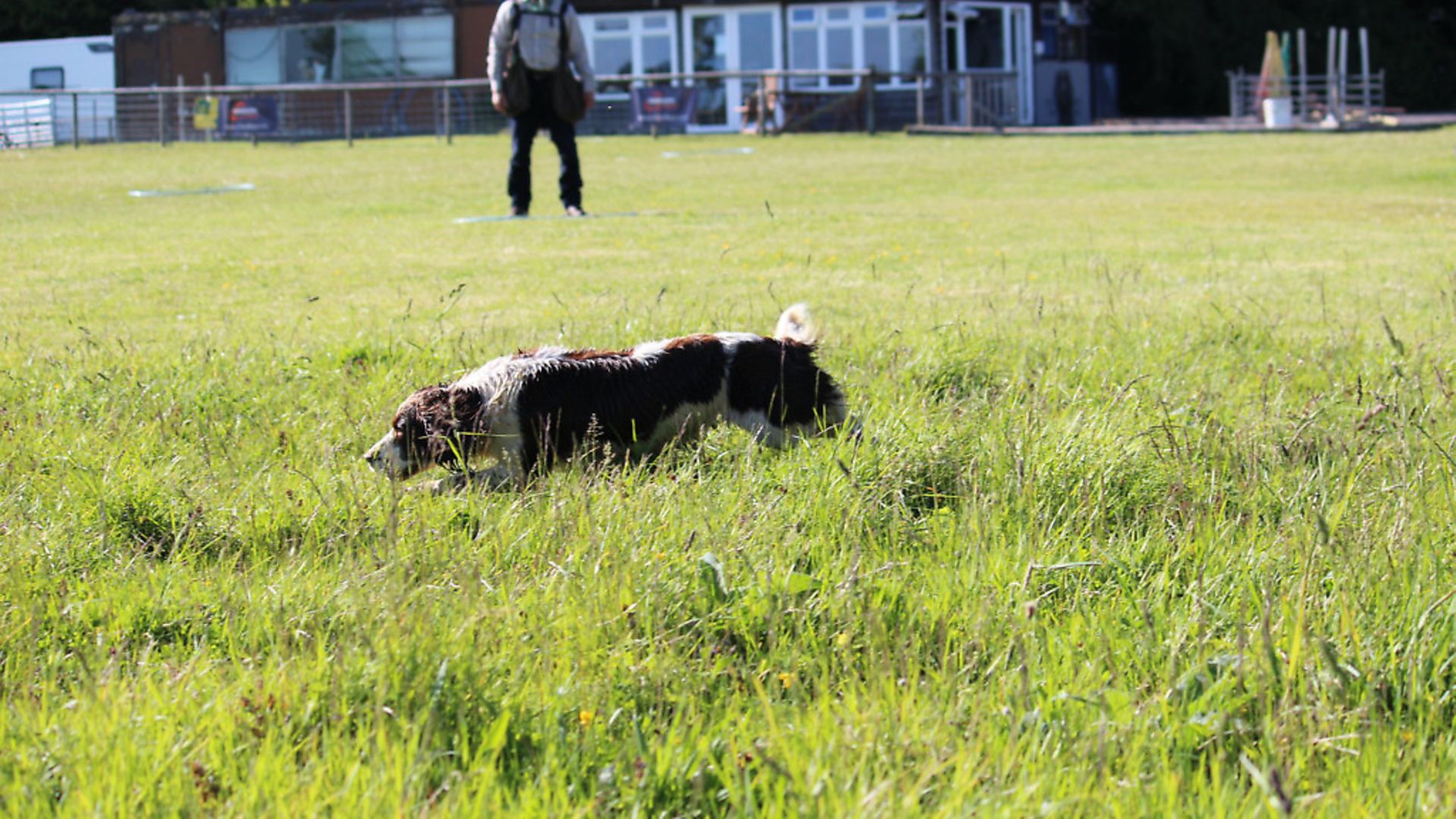 credit: Archant
credit: Archant
I have written previously about teaching our dogs to take a straight line when sent for a retrieve. Upon reaching the area where the retrieve is, the dog should then start hunting on command. This month, we are going to take a look at some of the training that we will need to cover in order that we have the skills and control to stay in this location. This is called 'the area'.
One of the most important things to understand is just exactly how big 'the area' should be and why we need to keep the dog in it. Let's deal with the second bit first. Once sent for a retrieve, our aim is to retrieve the bird to hand as quickly and quietly as possible. By keeping the dog in 'the area', this is much more likely to happen. In doing this, we can also avoid disturbing other areas of ground and the game it might contain.
The amount of ground that we allow the dog to hunt will depend on a number of factors. If you are given a reliable and accurate location on a dead bird, you can be pinpoint accurate with your direction and keep the dog really tight. Stating the obvious, if the mark you are given is more vague, you must allow the dog the freedom to hunt and find the bird. (Sorry for sounding a bit like a politician talking about Brexit now, and yes I apologise for allowing Brexit to get into a gundog article!)
It's impossible to set fixed parameters on this subject as every piece of ground will require a different approach. Here at Mullenscote, we use either purpose-built hunting pens or marker poles to encourage dogs to hold an area that's approximately 8x8m. I can't think why we decided on that size, but looking at the area it seems about right.
One other really important thing to factor in is that the bird may well have moved several metres or have left the area altogether (a runner). Experience and a thorough understanding of your dog's behaviour will tell you when to trust them and let the dog take a line (i.e. follow a blood trail out of an area).
It's important to remember that the lines of communication required to get the dog into the area to start with are fundamental to success. Straight lines and a sharp Stop whistle will be essential. If you've taught the dog to go out straight, stop on the whistle and hunt on command, the bird will be in the bag, and everything tickety boo.
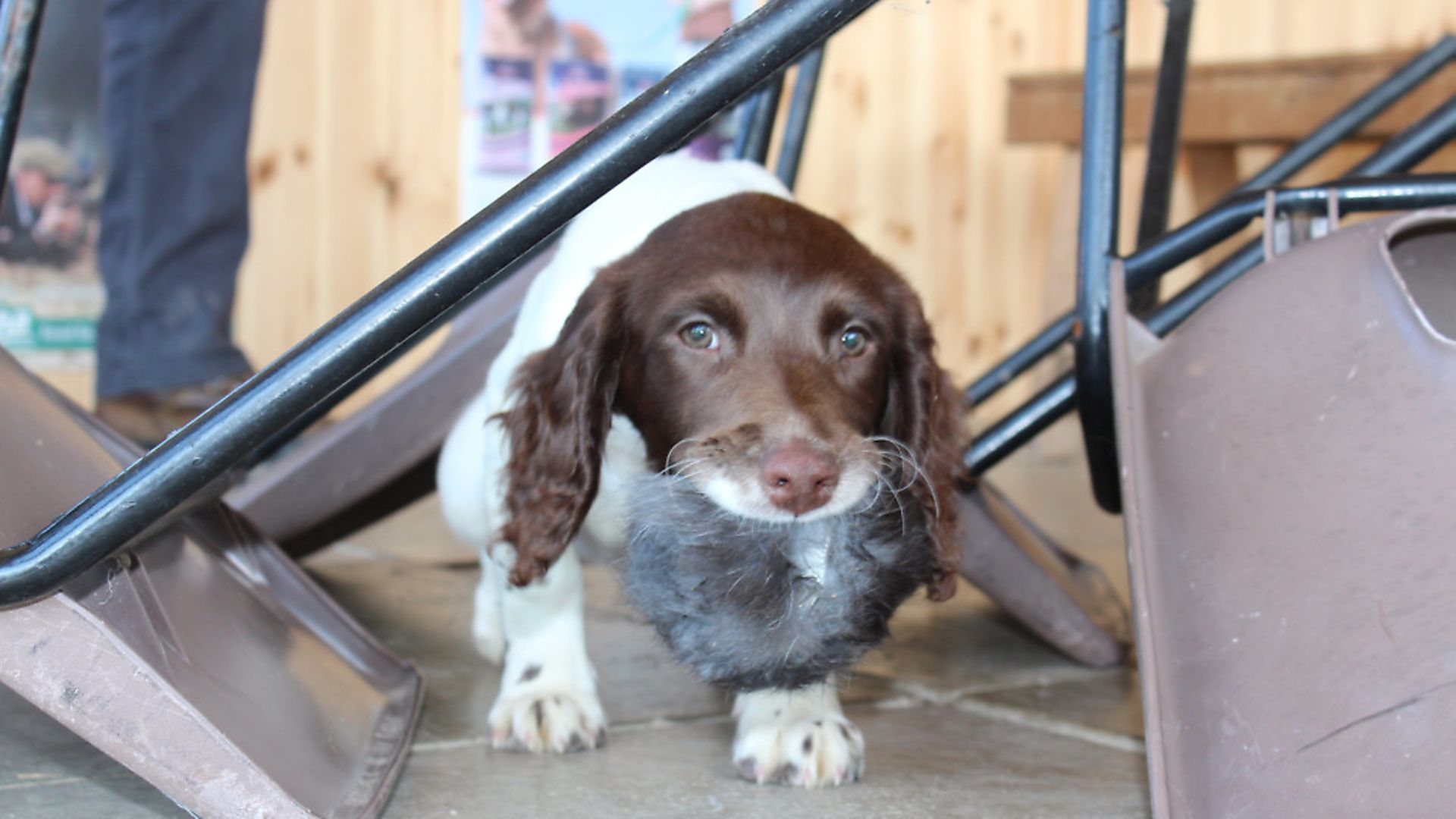 credit: Archant
credit: Archant
HOW TO DO IT
Let's start from the beginning. From when it's a tiny pup, you need to inspire the little monster to hold the area when hunting. Keep things simple; ensure the puppy has a quick find and slowly make the dummy more difficult to find, progressively encouraging the dog to work harder and harder to find the dummy.
If you make things too difficult, some youngsters will simply give up and head back to you. The real hooligans will resort to widening their search, meaning they are less likely to be successful. You need to keep a handle on this sort as they'll very quickly get out of control and learn to charge around the shooting field until they find something, which inevitably happens and rewards this behaviour.
Early encouragement can be done by hiding a dummy among a few scatter cushions in your front room. Maybe progress to a tennis ball in a little pile of softwood brashings in the garden. We're trying to encourage the little dog to be industrious, hunt hard but stay in 'the area'. A clearly defined hunting area will help.
So much of successful dog training is about encouraging successful behaviour. If the dog does something it gets a reward. Clearly, hunting is just that: the harder I work, the luckier I get.
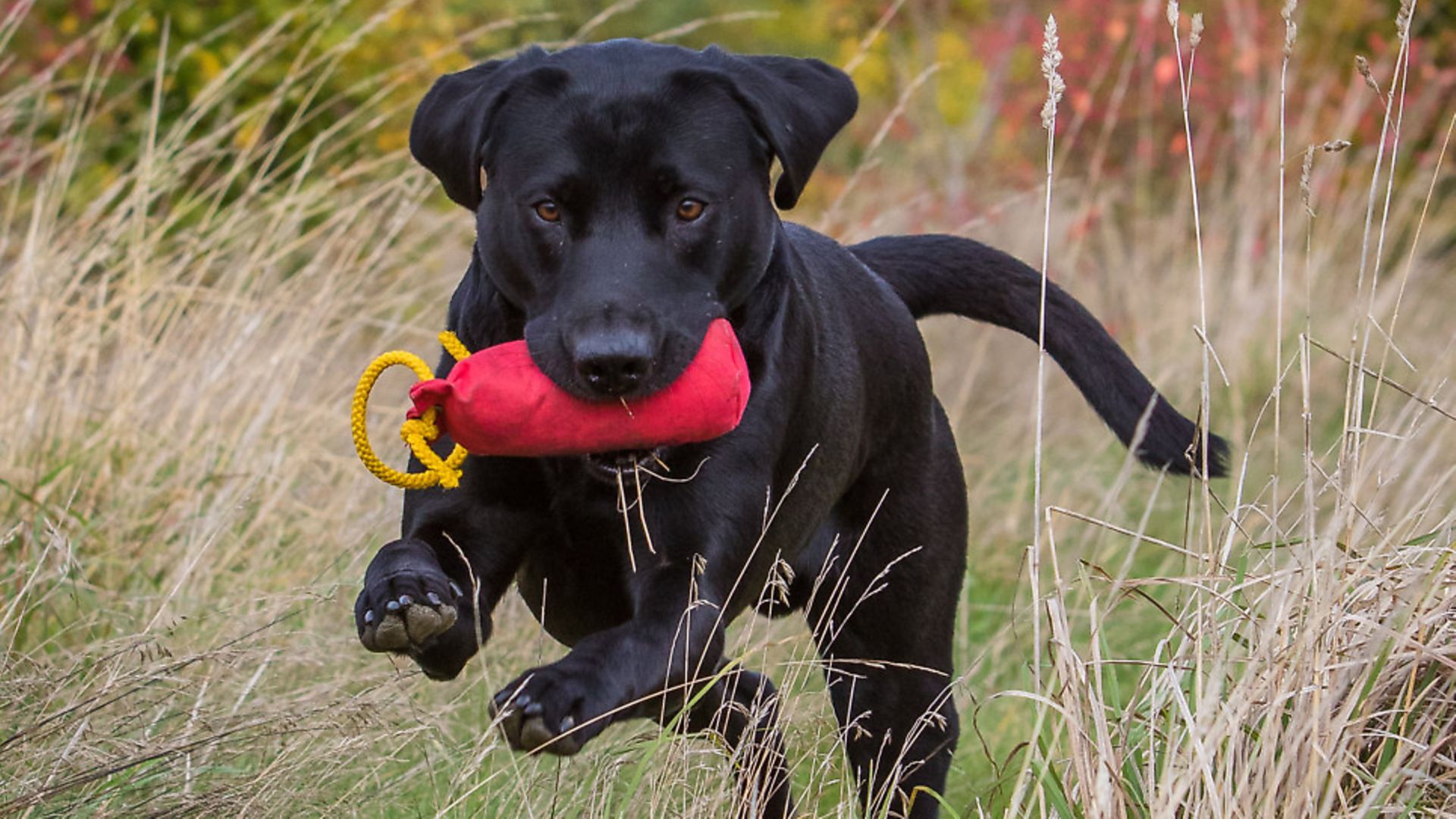 credit: Archant
credit: Archant
CASE STUDY
Inspiring this mindset must be ongoing. As the young dog develops, it's important not to let this slip. One of the young Labradors that we are working on at the moment runs out like a missile, straight to the area, charges through the area and gives it a cursory look (we call it 'Man Looking') and thinks 'nope it's not here… to infinity and beyond'! In a flash, he's hurtling around the field like nobody's business.
Don't be fooled by the keyboard experts who would say, "don't worry, he'll grow out of it, he won't find the dummy, so won't get a reward".
Idiots! (oh my word, I'm full of controversy in this article). How about we ask Paddy, the dog: "Hey Paddy, you're not finding the dummy while you're hooning around the field; it can't be much fun?" Paddy replies: "Idiots."
In fact, Paddy the 12-month-old Labrador is a great case study for this article. The sharp ones among you will have already figured out that we have worked hard on getting him to mark and take a line with confidence. Then you'd say: "Well clearly you've not taught him a Stop whistle, have you Howard?" Well, clearly we wouldn't be letting him hoon around the field if we had. It's a work in progress.
Over the training sessions in the coming months, we will show him that when he hears the Stop whistle, the subsequent directional commands that we give him will help him to get the dummy in his mouth quicker. With this particular dog we've built power, pace, marking and straight-line running first. Now we're going to convince him that we can help him in his quest as a predator to get prey in his mouth.
At present, 95% of his retrieving work is being done in one of our hunting pens. The dummies are thrown into areas of cover that are surrounded by an 80cm high post and rail fence. Once the dog has jumped into the hunting pen the only advice he gets comes in the form of the hunting whistle. This overlays his hunting behaviour - this particular dog gets his head down, he's got a really good work ethic. Oh boy, he wants to find that dummy! Paddy is quickly learning that he will be successful if he stays in the area that he saw the dummy fall. The fencing serves to keep him focused in this concentrated area.
This process will gradually teach him to look and listen to us for help if he needs it. And indirectly we'll use the exercises to school him to stop and look to us when he hears the Stop whistle. Holding the area is something we want the dog to do through choice. It's a strategy that gets the dummy in their mouths. Take the time to teach your dog to do this and it will be one of the skills that makes you and your canine partner someone that a keeper wants on a shoot day.
Keeeep training, get out there, have fun.
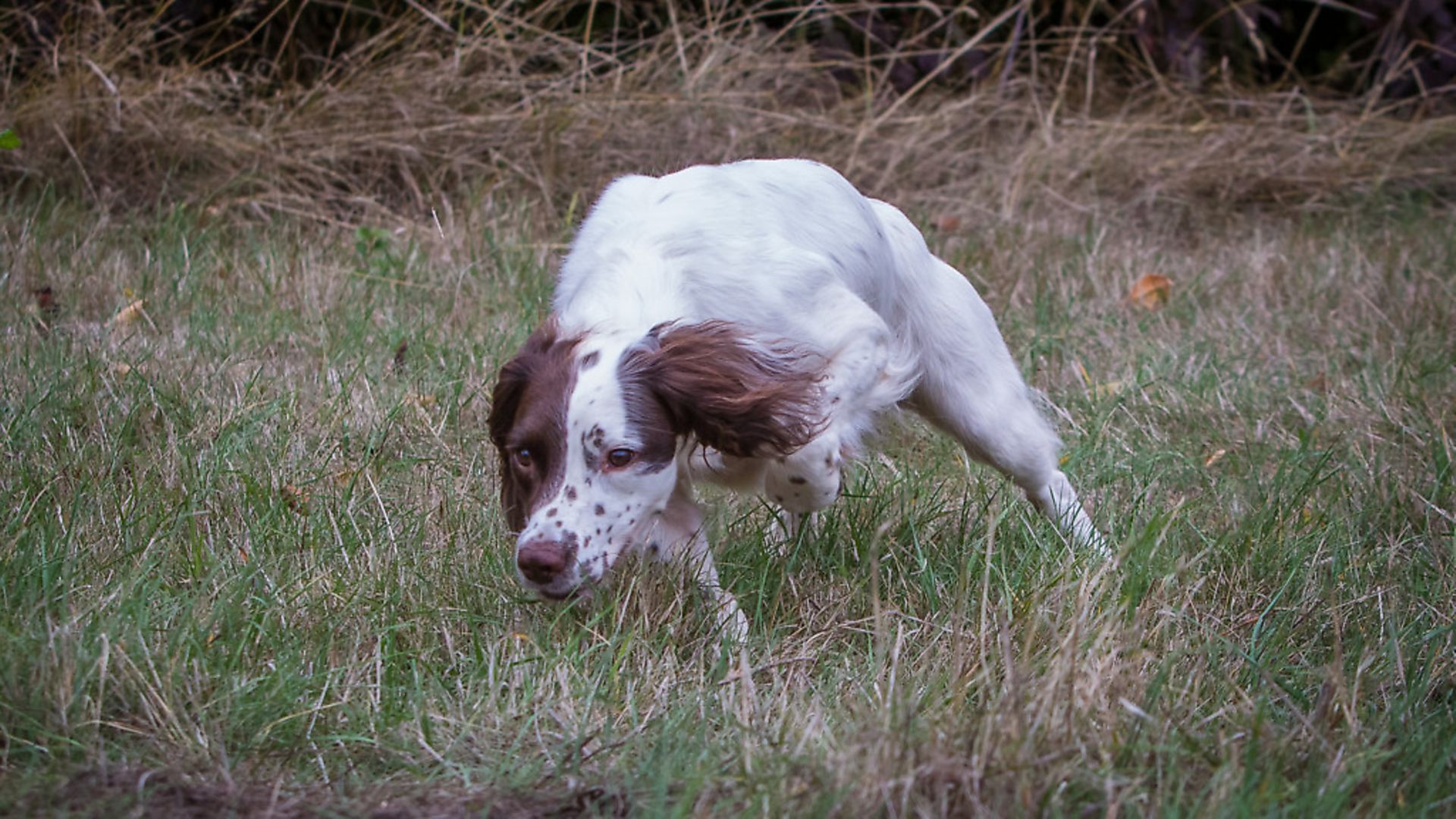 credit: Archant
credit: Archant
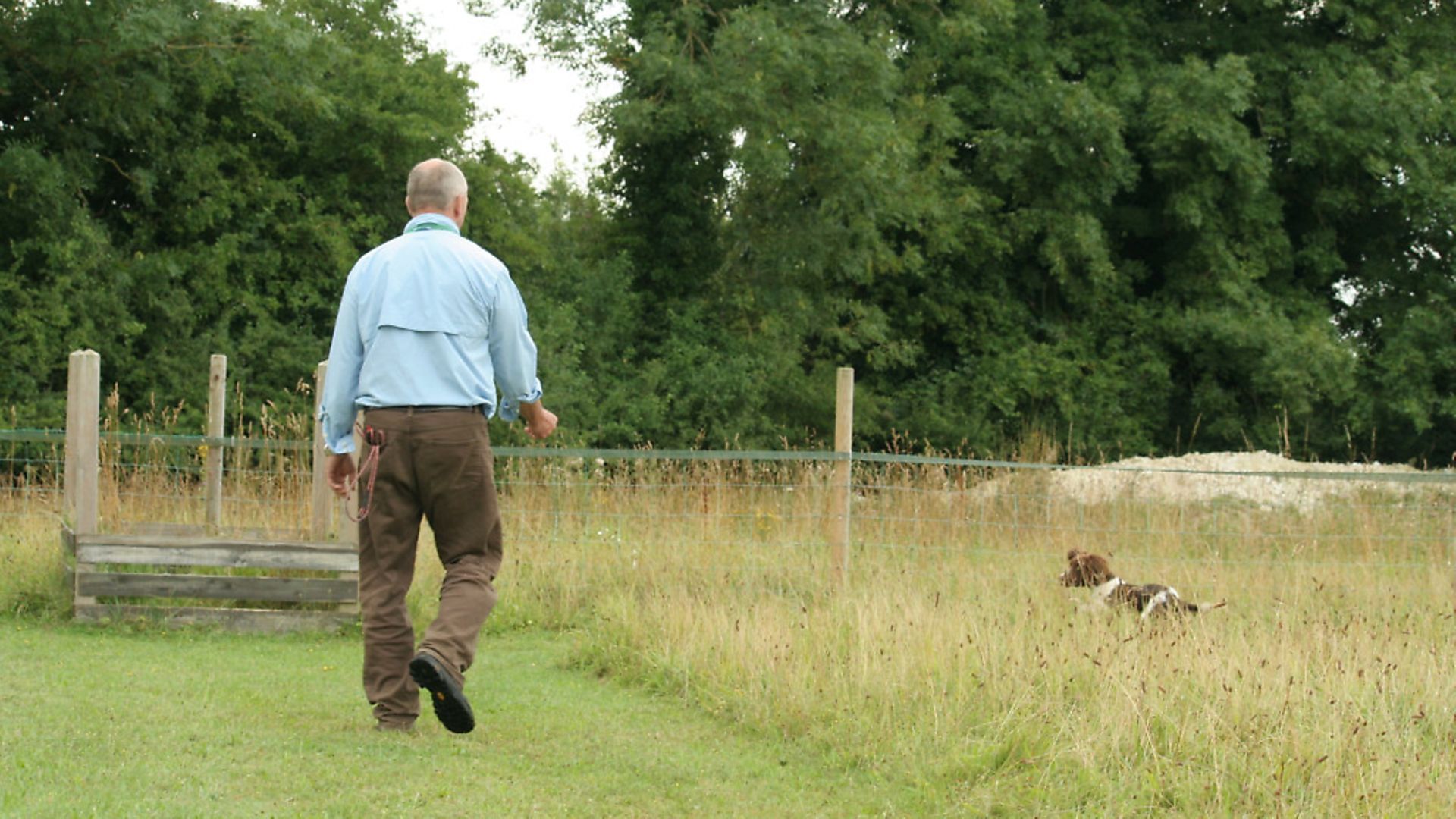 credit: Archant
credit: Archant
 credit: Archant
credit: Archant